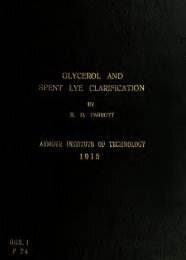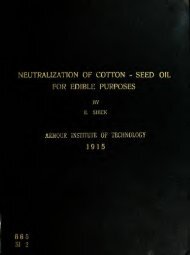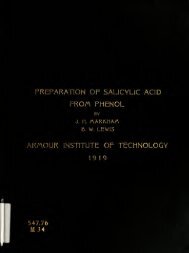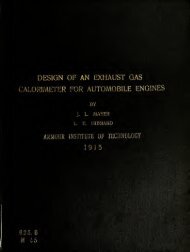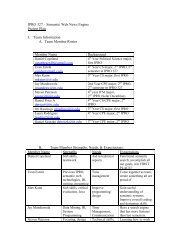View/Open - Illinois Institute of Technology
View/Open - Illinois Institute of Technology
View/Open - Illinois Institute of Technology
Create successful ePaper yourself
Turn your PDF publications into a flip-book with our unique Google optimized e-Paper software.
Discussion: From the results obtained it is<br />
evident that either there was no phenyl carbonate<br />
formed in the first part <strong>of</strong> the opera+ion, or that<br />
on treatment with caustic NaOH at a high temperature<br />
a decomposition <strong>of</strong> the phenyl carbonate sccurred with<br />
the lbss <strong>of</strong> phenol and the formation <strong>of</strong> sodium carbonate-<br />
Perhaps the first investigator <strong>of</strong> this reaction<br />
obtained some salol by careful control <strong>of</strong> the con-<br />
ditions* The reaction does not seem applicable, howev er.<br />
to commercial use«<br />
REIMER AKD II BORN REACTION<br />
In this process a mixture <strong>of</strong> ortho- and<br />
para-hydroxy-benzoic acids is obtained* The<br />
para- hody* however* predominates* According to<br />
Kupferberg* the sodium salt <strong>of</strong> para-hydroxy-<br />
benzoio acid when heated al 290°C* is converted<br />
to the ortho- body. If this rearrangement is<br />
possible commercially* then the reaction would<br />
<strong>of</strong>fer great possibilities for the production <strong>of</strong><br />
salicylates* For this reason the writers have<br />
carefully investigated the problem*<br />
-17-



